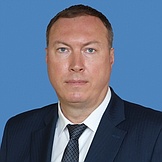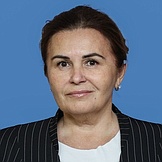Regional flags and emblems


PROFILE
Established 6 January 1954
Capital Belgorod
The Belgorod Region is part of the Central Federal District
Area 27,100 sq km
Population 1 501 600 (2024)
Ethnic groups
(2020 National Census, %)
Russian – 95,29
Ukrainian – 1,20
Other – 3,51
Administrative divisions (2024)
Municipal districts – 13
City districts – 9
Rural towns – 16
Rural districts – 174
Geography and climate
The Belgorod Region is part of the Central Black Earth Economic Region. It borders on the Kursk and Voronezh regions, the Lugansk People’s Republic. It also shares a state border with Ukraine.
The Belgorod Region is one of the few regions of the Central Federal District with a growing population, not counting the capital.
The Belgorod Region is situated in the centre of the European part of Russia, on the southern and southeastern slopes of the Central Russian Upland. The region is crisscrossed with rivers. The largest rivers are the Psyol, Seversky Donets, Vorskla, Oskol, Tikhaya Sosna and Valui. There are about 1,100 ponds and four water reservoirs in the region.
The region has a moderate continental climate with hot summers and relatively cold winters. The average annual air temperature is +5.8°C in the northeast to +7°C in the southeast. The average January temperature (which is the coldest month) varies between –8°C and −9°C. The summer is mostly warm. The average July temperature (the warmest month) is between +19.5 and +21°C.
The region has two protected natural areas: Prokhorovskoye Polye Museum Reserve and Belogorye State Natural Reserve.
Government
The legislative branch in the Belgorod Region is represented by the Belgorod Region Duma, which is permanent representative and only one legislative body of authority in the region.
The Belgorod Region Duma has 50 deputies elected for five years, with 25 running in single-mandate constituencies and the other 25 in the single electoral district, where winners are elected in proportion with the share of votes cast for lists of deputies nominated by electoral associations.
The current Duma was elected in September 2020. Its term expires in September 2025.
The executive branch is the Government of the Belgorod Region headed by the Governor and other executive authorities.
The Government of the Belgorod Region is the permanent supreme collegial executive authority in the region.
The Governor of the Belgorod Region is the region’s highest-ranking official, leads the executive branch in the region. Ye is elected for five years by Russian citizens who permanently reside in the region. The term of the incumbent Governor expires in September 2026.
Economy and natural resources
The Belgorod Region is one of Russia’s successfully developing industrial and agricultural regions. It has ranked among the top 10 Russian regions with the lowest investment risks for 15 years.
Manufacturing, agriculture, wholesale and retail trade, construction, transport and communications are the leading sectors, providing the bulk of the gross regional product.
The Belgorod Region is one of Russia’s industrial centre with a high share of the country’s mining industry: mining companies produce one-third of national iron ore concentrate and iron ore pellets. Located in the region, the Kursk Magnetic Anomaly serves as a hub for Russia’s largest mining companies – Lebedinsky GOK (mining and processing plant) and the Stoilensky Mining and Beneficiation Plant, which make ready-to-use rolled ferrous metal products, cement-asbestos board and concrete. The region has iron ore, bauxite, apatite, chalk, sand, clay and multi-purpose clay loam deposits. It also produces ferrous metals, asbestos-cement boards and cement. Brick and cement plants are situated in the areas rich in chalk and clay. The chemical industry is also well-developed.
Agriculture has historically been one of the most important economy sectors in the region because of its climate. Livestock farming is a priority. Starting in 2010, the Belgorod Region has been producing more than one million tonnes of meat per year. Forage and industrial crops as well as cereals and sugar beet are agricultural mainstays. The region produces combined feeds, oils, beet sugar, margarine and condensed milk.
The Belgorod Region is a leading livestock producer in Russia.
Culture and tourism
The famous Battle of Prokhorovka took place in the Belgorod Region during the Great Patriotic War, and marked a turning point in the fight against Nazi Germany. The Victory Monument, a bell tower, was constructed on Prokhorovskoye Field to commemorate the battle, and St Peter and St Paul’s church was built in the village with private donations. Russia’s largest diorama museum, Ognennaya Duga (Fire Arc), was established to commemorate the battle.
The region is also home to the Museum of People’s Culture, the State Art Museum (with almost 3,700 exhibits: paintings, graphics, sculpture, wood and icons), the State Local History Museum founded in 1924 and the State Literature Museum.
The historic buildings have been preserved in Belgorod, such as the house of Trader Selivanov (18th century), the house of Trader Goltsov (19th century) and the former European Hotel.
St Nicholas’ Cathedral of the Assumption, built in 1703, is the oldest church in Belgorod. The city’s most famous and largest landmark, the Monument to Vladimir the Great, is located on Kharkovskaya Gora.
The Trinity Kholka Monastery, located 15 km away from Stary Oskol, is one of the main sights in the region. The monastery was founded in the 17th century. Monks’ cells and the underground church were carved into a chalk montain. There is also a more modern church complex above the ground.
There is the Shebekino Historical and Art Museum located in the city of Shebekino, with an exhibition partly dedicated to the history of the Nezhegolsk City Fortress that later became Shebekino.
There are also several preserved landmarks in the small town of Birych: the Church of the Mantle of Our Lady, Mitrophan’s Church and the Church of Theotokos as well as the old marketplace (18th century) and the old zemstvo building (local administration). Several fragments of Belgorod’s Great Abatis Line (Zasechnaya Cherta) also remain in the region (17th century).

